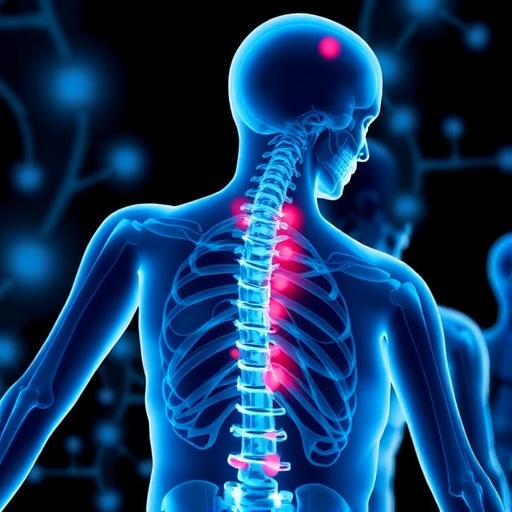The management of pain presents a formidable challenge for a wide array of healthcare professionals, encompassing general practitioners, specialist pain physicians, surgeons, neurologists, and physiatrists. Among various pain types, acute postoperative pain has garnered considerable attention, highlighting the need for effective treatment strategies. Recent clinical research has identified a promising avenue for pain alleviation through the inhibition of Nav1.8, a sodium channel crucial for the repetitive firing of peripheral pain-signaling neurons. What sets Nav1.8 apart is that it has no essential functional role in the central nervous system (CNS), which indicates that targeting it might offer a path to pain relief without significantly affecting central nervous system operations.
Several studies have illustrated that blocking Nav1.8 can lead to a reduction in pain, yet it is vital to note that this reduction has been only partial. Despite the encouraging results for acute pain management, translating these findings into the realm of chronic pain remains an elusive challenge. This raises critical questions regarding the efficacy, safety, and applicability of prolonged Nav1.8 inhibition in patients suffering from enduring pain conditions.
One of the primary considerations is whether more potent Nav1.8 blockers can be developed, thus enhancing the effectiveness of pain relief strategies. Scientific inquiry into this question is ongoing, focusing on the development of next-generation Nav1.8 inhibitors that can provide more substantial and consistent pain alleviation. The complexities underlying pain pathways necessitate a multidisciplinary approach that combines pharmacological innovations with an understanding of individual patient profiles, thereby maximizing treatment efficacy.
Another facet that complicates the challenge of pain management is the potential existence of neural mechanisms that might impose limitations on the threshold of pain relief achievable through Nav1.8 inhibition. The existence of a ceiling effect indicates that even an optimal dosage of a Nav1.8 blocker may not suffice to extinguish pain completely. This necessitates a deeper dive into the neurobiology of pain and the various compensatory mechanisms often employed by the body, leading to the development of secondary pain pathways that might inhibit the effectiveness of therapeutic interventions.
Transitioning from acute to chronic pain management reveals further complexities. Chronic pain often involves neuroplastic changes within the nervous system that can dramatically alter baseline pain sensitivity and pain perception. For instance, in chronic pain conditions, the nervous system appears to adapt through various compensatory changes, which may lead to the development of new pain “generators” within the CNS. This phenomenon complicates treatment approaches, as reliance on sodium channel inhibitors like Nav1.8 may not be sufficient to offer relief to patients whose pain is mediated by these altered neural pathways.
Clinical complexity further underscores the urgent need for diverse therapeutic strategies in managing pain. Chronic pain is multifactorial, often overlapping with psychological, emotional, and sociocultural dimensions, making it a complex condition that defies a one-size-fits-all approach. Successful treatment typically requires an interdisciplinary approach, combining medications, interventions, psychological support, and physical therapies tailored to the individual.
Moreover, the pharmacogenomics of each patient can significantly influence the effectiveness of Nav1.8 blockers and other pain management strategies. Variability in drug metabolism and systemic responses means that what works for one patient may not be effective for another. Therefore, personalized medicine approaches are paramount in optimizing treatment plans and improving patient outcomes in pain management.
Innovative research and development are underway to identify not only more effective Nav1.8 blockers but also adjutant therapies that can work concurrently to enhance pain relief and mitigate compensatory mechanisms. The potential for combination therapies—employing various pharmacological agents alongside interventions like physical therapy or cognitive-behavioral strategies—highlights a promising future in pain management.
Furthermore, understanding patient-specific variables such as genetics, comorbidities, and psychosocial factors offers a more holistic view of treatment. Tailored therapeutic approaches can significantly enhance the effectiveness of Nav1.8 modulation while addressing the multifaceted nature of pain. This integrated strategy is essential for providing a more comprehensive and adaptive response to pain therapy.
As we forge ahead, exploring the depths of how Nav1.8 inhibition can not only transform acute pain management but also bridge the gap to chronic pain therapy holds transformational potential. While the journey is fraught with challenges and complexities, harnessing the full breadth of our understanding of pain mechanisms, combined with innovative therapeutic modalities, could one day lead to definitive solutions for those who suffer from debilitating pain.
In conclusion, while promising strides have been made in understanding and targeting sodium channels like Nav1.8, significant hurdles remain. Ongoing research is critical to unraveling the intricate web of neural mechanisms surrounding pain and to the establishment of effective, long-lasting interventions. The medical community must remain vigilant and innovative in the quest to alleviate pain, not just for those with acute injuries but for millions enduring chronic discomfort.
Without question, the road ahead involves relentless inquiry and multidisciplinary collaboration in medicine. The complexities of pain are an ever-evolving field, and the pursuit of knowledge and therapeutic strategies will ultimately improve patient care and quality of life for countless individuals suffering from pain.
Subject of Research: Sodium channel inhibition for pain management
Article Title: Targeting sodium channels — challenges for acute pain and the leap to chronic pain.
Article References:
Alsaloum, M., Vasylyev, D. & Waxman, S.G. Targeting sodium channels — challenges for acute pain and the leap to chronic pain.
Nat Rev Neurol 21, 567–576 (2025). https://doi.org/10.1038/s41582-025-01127-1
Image Credits: AI Generated
DOI: 10.1038/s41582-025-01127-1
Keywords: Pain management, sodium channels, Nav1.8, acute pain, chronic pain, neural mechanisms, pharmacogenomics, personalized medicine.




